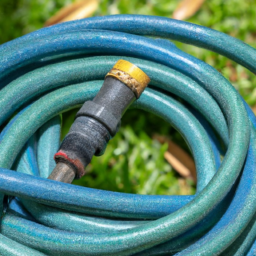How To Increase Garden Hose Pressure
Table of Contents []
How To Increase Garden Hose Pressure
How To Increase Garden Hose Pressure: A Guide to Improved Water Flow
Gardening with effective water flow is essential for fast, healthy plant growth. This can cause frustration and disappointment if you discover your garden hose pressure is low, yet it doesn't have to be that way as there are simple steps to improve the situation.
1. Check The Hose Compatibility
Before making any changes to your garden hose, it is essential to check whether the hose, valves, connectors, and implementation mechanism are all compatible. If the components are of mixed adaption and mismatched sizes, the garden hose will likely not reach desired pressures, or there will be other water flow issues.
2. Check for Kinks and Leaks
Kinks in a garden hose are one of the most common causes of low water flow and pressure. They can occur from accidental sharp bends and cramping when storing a hose. Be sure to also check for any signs of leakage which will also reduce the desired pressure flow. A quick visual check of the entire hose should suffice to identify any potential issues.
3. Increase the Width of the Hose
A simple yet effective way to increase garden hose pressure is to upgrade the size. The thicker the radius, the more surface area is given for the water to travel and the more pressure it can carry. The most common dimensions are 5/8 inch and inch, both easily accessible and relatively inexpensive upgrades.
4. Increase The Hose Length
A shorter hose will reduce the pressure slightly with each meter increment, and thus a longer hose will help maintain the fixed pressure as water travels throughout. Furthermore, longer hoses give you more flexibility for reaching far-reaching places and create less of a hassle to adapt to different lengths with every new gardening project.
5. Try Connecting Multiple Hoses
Connecting two different garden hoses together is a quick and inexpensive way to increase the pressure levels. It is important to bear in mind that this option will generally only work when the hoses are of similar dimensions, have compatible connectors, and are in relatively good condition.
6. Replace the Faucet
Garden hose connectors can become damaged over time. This often reduces the pressure from the water source which could be resolved by replacing the faucet. Although this option is slightly more costly than other solutions, it will often give you the best water flow performance with the lowest levels of hassle.
7. Upgrade to a Pressure Regulator
A pressure regulator is designed to attach to an outdoor faucet in order to control the pressure levels and maintain a constant flow. This device can be adjusted precisely with a simple dial, and it is also relatively inexpensive.
8. Get a Pump System
This is the best way to increase garden hose pressure, yet it may be overkill and costly for smaller projects. Typically water pumps are connected to a reservoir and supply a consistent supply of pressurized water.
Brief Recap
Increasing garden hose pressure is essential for efficient water flow and happy plants. There are several different solutions to consider, depending on the existing infrastructure and budget. The measures are ranging from simple changes such as checking for kinks and upgrading the size, to more expensive solutions like installing a pressure regulator or a pump system.
Regardless of the chosen solution, the water pressurizing will certainly help your garden thrive.

Previous Page
